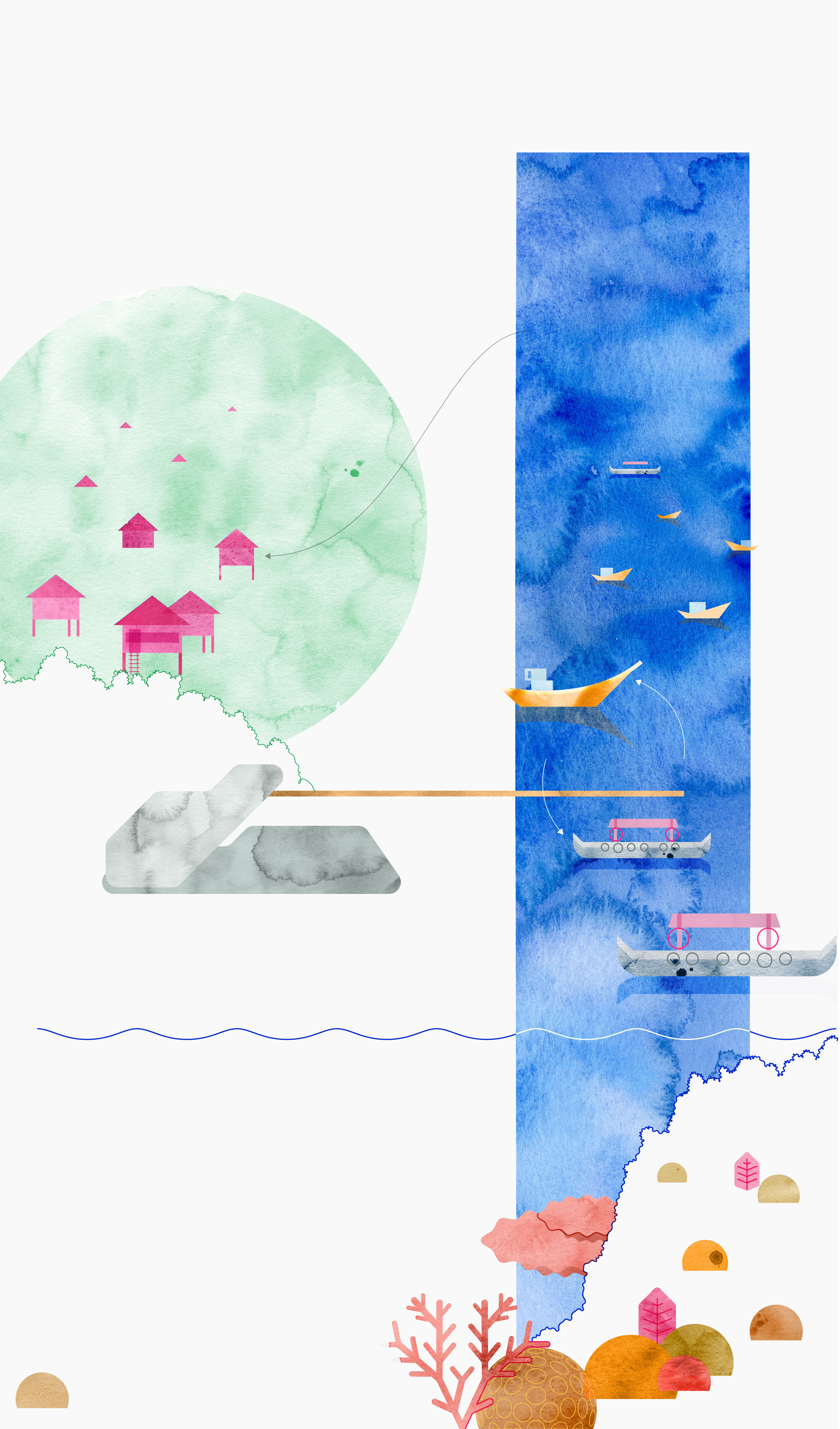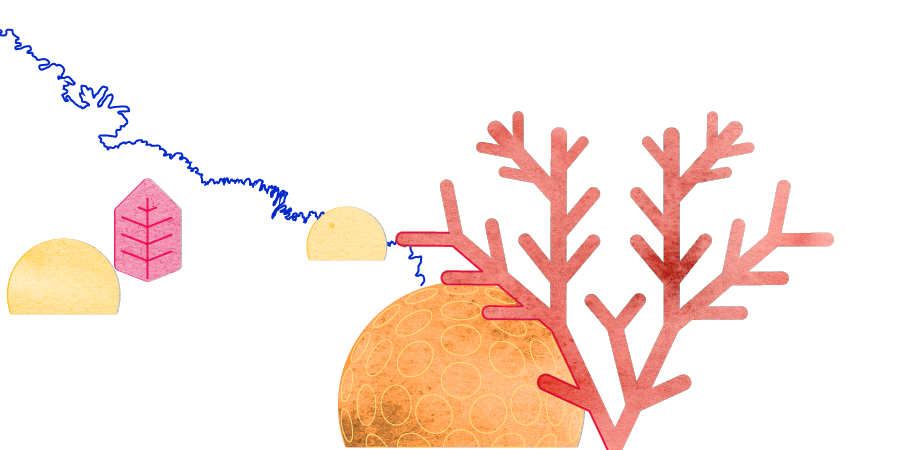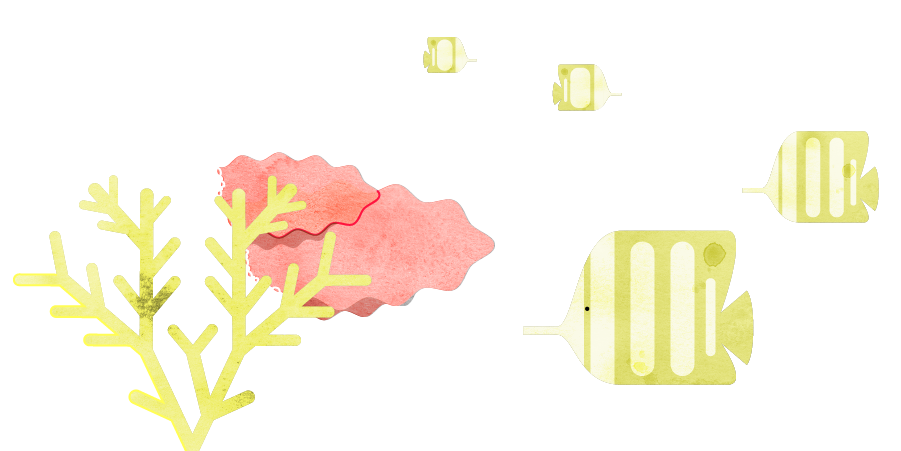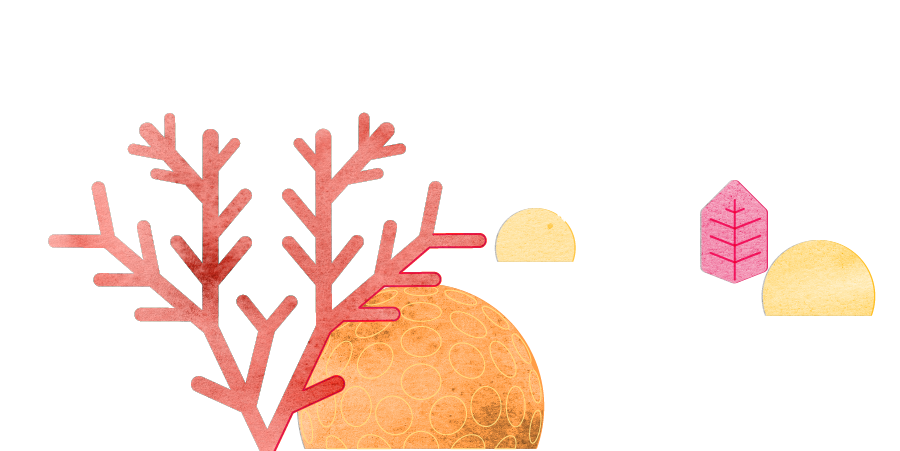Life
Below
Water
In partnership with
Coral reefs occupy less than 1 per cent of the ocean floor …
… yet they are home to more than 25 per cent of marine life.
Human activity and a warming planet are rapidly degrading these precious and fragile ecosystems.
This story is part of a series from UNEP that showcases how humanity can live more in harmony with nature on a pollution-free and climate stable planet.
More stories from the series
The Status of Coral Reefs of the World: 2020 is a report by the Global Coral Reef Monitoring Network (GCRMN), a network of the International Coral Reef Initiative (ICRI). Its findings show that between 2009 and 2018 there was a progressive loss of about 14 per cent of the coral from the world's coral reefs primarily caused by recurring, large-scale bleaching events. In all, about 11,700 square kilometres of hard coral, which is more than all the coral currently living on Australia's coral reefs, were lost.
The report paints a picture of four decades of declining coral abundance, more frequent bleaching, and increasing amounts of algae, which is a sign of declining reef health. However, the report also reveals the incredible ability of coral reefs to recover when they are not disturbed by local and global threats. Both findings should motivate swift action. While coral reefs remain mostly hidden from sight, their health must be at the forefront of environmental efforts and decision-making processes.
This report:
Is the first in 13 years
Examines the status of the world's coral reefs over the last 40 years
Represents the work of more than 300 scientists from the global scientific community
Is founded on a global dataset comprised of almost 2 million observations
From more than 12,000 sites
In 73 countries
Across 10 GCRMN regions

Corals On The Brink …
Hidden below the ocean’s surface exist the textured and colorful landscapes of coral reefs. These dynamic underwater cities support up to 800 different species of hard coral and are home to more than 25 per cent of all marine life. Reefs grow over thousands of years thanks to millions of tiny individual coral polyps that secrete calcium carbonate exoskeletons to form colonies of hard coral that are the building blocks of reefs. Soft corals bend and sway amongst the craggy mountains of hard corals providing additional homes for fish, snails and other marine creatures.
Reefs teem with life. In fact, they harbour the highest biodiversity of any ecosystem globally, making them one of the most biologically complex and valuable ecosystems on the planet. These vibrant ecosystems exist throughout the tropics and support more than 1 billion people through their invaluable ecosystem services.
However, corals are facing an existential crisis due to climate change and a range of local threats and stressors.
Coral reefs' extreme susceptibility to warming seas makes them one of the most vulnerable ecosystems to climate change.
Higher ocean temperatures — and ocean heatwaves — are the main triggers of coral stress and bleaching.
When waters get too warm for corals, corals release their colorful micro-algae, turning a skeletal white.
Some corals “glow” by naturally producing a protective layer of neon pigments before they bleach.
If bleaching events are prolonged or happen too frequently with not enough time to recover in between, significant coral mortality can occur, sealing the fate of coral reefs.
Bleaching can be thought of as the ocean’s version of the ‘canary in the coral mine’ since it demonstrates corals’ sensitivity to dangerous and deadly conditions.
According to the GCRMN's Status of Coral Reefs of the World: 2020 report, there has been a steady decrease in hard coral cover since 2010. The worst impacts have occurred in South Asia, Australia, the Pacific, East Asia, the Western Indian Ocean, The Gulf and Gulf of Oman.
Note: The shaded areas behind the line represent the 80% and 95% credible intervals —or how certain the authors are about their estimates.
Since 2010, the amount of algae on the world's coral reefs has increased by about 20 per cent, mirroring the decrease in the amount of hard coral over this period.
Note: The shaded areas behind the line represent the 80% and 95% credible intervals —or how certain the authors are about their estimates.
A shift from coral- to algae-dominated reefs reduces the architectural complexity and structural integrity of these habitats. As a consequence, they are less biodiverse and provide fewer goods and services to humans.
The process is apparent in this timelapse: as corals bleach …
… algae take over.
UNEP's 2020 Projections of Future Coral Bleaching report says that global bleaching events may become the norm over the coming decades due to climate change. The report estimates that unless we rapidly reduce carbon emissions, all of the world's reefs will bleach by the end of the century. By 2034, severe bleaching is expected to occur annually, at which point, recovery becomes inconceivable unless corals can adapt to higher temperatures.
Corals aren't the only species at risk in our warming world. More than 1 million species of plants and animals face extinction in the coming decades, placing human wellbeing and survival at risk, says the Intergovernmental Science-Policy Platform on Biodiversity and Ecosystem Services. Corals, however, have shown the most rapid increase in extinction risk of all the species assessed by the Global Biodiversity Outlook. The combined impacts of ocean acidification, warmer sea temperatures and local stressors, such as overfishing, pollution, unsustainable tourism and poor coastal management, are combining in a perfect storm to push these sensitive ecosystems to a tipping point.
A Glimmer of Hope
Despite these gloomy assessments, all hope is not lost for coral reefs. They are remarkably resilient and can recover in the absence of large-scale disturbances.
After the 1998 mass coral bleaching event, hard coral cover rebounded to pre-1998 levels within a decade.
In 2019, despite increasingly frequent bleaching events, the amount of coral on the world’s reefs increased by 2 per cent. Scientists are also identifying pockets of coral habitats that are more resilient to climate change. Such pockets have been found in reefs off the coast of countries such as Kenya, Tanzania, Australia, Indonesia, Malaysia and India. Finding and incorporating coral safe havens, or ‘refugia,’ into conservation plans is vital for ensuring a future for coral reefs as we work to halt and reverse the current threats.
If we halt and reverse ocean warming through global cooperation, we give coral reefs a chance to come back from the brink. It will, however, take nothing less than ambitious, immediate and well-funded climate and ocean action to save the world's coral reefs. The Global Fund for Coral Reefs is the first global blended finance instrument to fund and direct urgent action.

Why We Should Care
Coral reefs are priceless, and their importance can’t be overestimated.
While they occupy less than 1 per cent of the ocean floor ...
… corals are the foundation of many coastal communities, providing people with food, protection from storms, life-saving medicines ...
… and livelihoods from tourism and fishing.
Coral reefs contribute US$36 billion to the global tourism industry annually.
In all, more than 1 billion people benefit directly from coral reefs.
The economic benefits of coral reefs grow or dwindle depending on their relative health. Restoring corals could unlock tens of billions of dollars in economic value, says the 2018 Coral Reef Economy Report from UNEP, the Prince of Wales's International Sustainability Unit, the International Coral Reef Initiative, and Trucost.
The report found that tourism, coastal development and commercial fisheries that rely on coral reefs annually provide US$6.2 billion in value in Mesoamerica, and US$13.9 billion in value in the Coral Triangle. If the reefs continue declining over the next decade, their annual value will plummet by 50 per cent in Mesoamerica, and 16 per cent in the Coral Triangle. However, these reefs could yield US$8.7 billion annually in Mesoamerica and US$16.5 billion annually in the Coral Triangle if they are revived by 2030.

The Benefits Beyond Economics
The value of healthy reefs extends far beyond economics.
Healthy coral reefs are the first line of defense for millions of coastal inhabitants globally. They reduce wave energy, act as barriers to storms, prevent catastrophic erosion and stave off flooding, particularly in small island states and atoll nations. Coral reefs are considered the rainforests of the ocean and the medicine cabinets of the 21st century. In the future, coral reefs could represent an increasingly important source of medicines for various diseases (including cancer), nutritional supplements, and of other commercial products. In fact, the prospect of finding a new drug in the sea, especially amongst coral reef species, may be 300-400 times more likely than isolating one from a terrestrial ecosystem.
If you've ever been swimming, snorkeling, or diving in the ocean, or just gazed at the sea while barefoot in the sand, you know that many aspects of the ocean can't be quantified except in terms of tranquility and wonder. But, time is running out to take action for our ocean and to save the world's coral reefs.
Science Can Help Save Corals
This year marks the beginning of the United Nations Decade of Ocean Science for Sustainable Development and the United Nations Decade on Ecosystem Restoration.
The campaigns are designed to help protect our seas through scientific advancement and to resuscitate the planet’s declining ecosystems.
Science is a powerful tool. Science spurred the healing of the ozone layer, propelled the rapid development of COVID-19 vaccines, and can reverse the decline of the ocean and coral reefs. Science also informed GCRMN The Status of Coral Reefs of the World: 2020 report, which shows that in 2019, the global average live hard coral cover on the world's coral reefs was 29.5 per cent, compared with 32.3 per cent in 1978. Coral cover is a measure of the percentage of a coral reef's surface covered by living hard, reef-building, corals.
The width of each column represents the proportion of the world’s coral reefs occurring within each region.
The height of the yellow section represents the average hard coral cover in each region in 2019.
In 2019, the global average live hard coral cover was 29.5 per cent.
But coral cover varies from region to region. Coral reefs in the Pacific have, on average, almost twice as much coral as those in the Caribbean.
Also, each region shows different trends. See how average live hard coral cover has changed in each region over time.
The ocean covers 70 per cent of the Earth, yet we know little about what lies beneath its surface.
What we do know is that tackling coral reef degradation requires an all-hands-on-deck approach. "Ambitious and coordinated efforts by governments, businesses and people around the world can prevent and reverse the worst impacts of environmental decline by transforming key systems, including energy, water and food, so that our use of land and oceans becomes sustainable," says the UN Making Peace with Nature report. A new approach means placing the health of our natural world at the heart of decision-making so that social and economic systems demonstrate and uphold their intrinsic and extrinsic value.

How We Can Make A Difference
In 2021-2022, political leaders will attend key decision-making events for the future of coral reefs.
The first is the 15th meeting of the Conference of the Parties (CoP) to the Convention on Biological Diversity (October '21 & April '22).
There, the world’s governments will negotiate a post-2020 global biodiversity framework, which will serve as a set of global goals that allow humanity to live in harmony with nature in the coming decade.
Over the last two years, the International Coral Reef Initiative, a global partnership with 93 members, including governments, civil society groups and private sector companies, has developed a recommendation for conserving coral reefs. The premise for the recommendation: taking action to prioritize coral reefs can deliver benefits of US$2.7 trillion, and contribute to the safety, nutrition, economic security, health and well-being of more than 1 billion people. The recommendation, which will be presented at the Convention on Biological Diversity summit, calls for coral reefs to be recognized as critically threatened ecosystems and for them to be prioritized within the post-2020 global biodiversity framework. It features a set of clear indicators that measure the health, integrity and function of coral reefs, including:

Live Coral Cover — provides a snapshot of overall reef health

Coral Reef Extent — determines if the area of coral reef systems is increasing or decreasing

Fleshy Algae Cover and cover of key benthic groups — indicate coral reef health, increases in algal cover can show declining health

Fish Abundance and Biomass — reflects a coral reef's productivity and functional integrity

Percent Coral Reefs Effectively Protected — measures commitment to protecting coral reefs

Index of Coastal Eutrophication — signals water quality impacts in coastal areas
The second milestone for decision-makers is the 26th meeting of the Conference of the Parties to the United Nations Framework Convention on Climate Change. This year’s climate conference will be critical for countries to accelerate Paris Agreement emission reductions to limit the rise in global average temperature to well below 2° C.
We know what needs to be done to save the Earth’s coral reefs: urgently tackle global climate change, while simultaneously reducing more localized environmental stressors, such as overfishing, sewage and fertilizer pollution, dredging, and coastal development. These two critical meetings are pivotal for the advancement and implementation of effective solutions to the crisis coral reefs are facing.
But protecting coral reefs is not the work of political leaders alone. You can also show leaders that you care and are paying attention by advocating for faster and more meaningful change. UNEP's Glowing Glowing Gone Campaign calls for strong protection for coral ecosystems and net-zero carbon emissions by 2050. The campaign's theme, "Let's be the first generation to save an entire ecosystem," aims to motivate the public and media to raise their voices and become agents of change by taking steps to lessen their own environmental footprint. A healthy planet means healthy people, and a healthy planet is dependent on a future with coral reefs.

